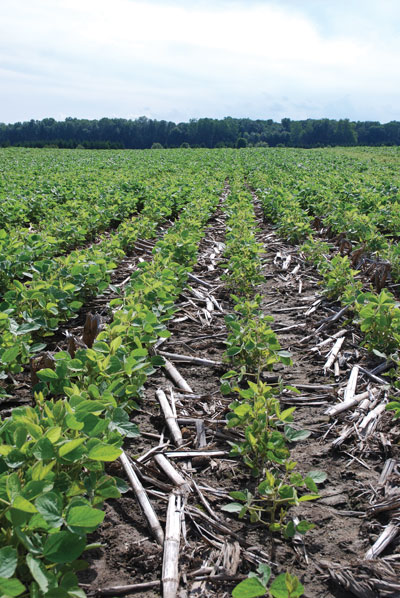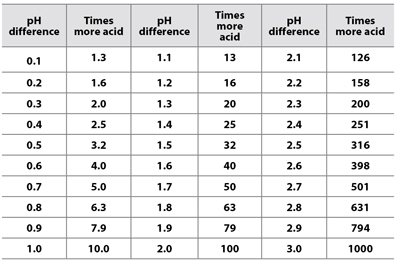
Features
Agronomy
Soil
How does one pH compare to another? Answer is complex
Soil pH. It is one of the most important chemical properties that affect nutrient interactions in soils and plants.
November 30, 2011 By Dr. T. Scott Murrell*
Soil pH. It is one of the most important chemical properties that affect nutrient interactions in soils and plants. It is, however, one of the most misunderstood measurements, particularly when comparing one pH value to another.
 |
|
| Soil pH affects nutrient interactions in soils and plants. Photo by Ralph Pearce. |
A question that is often asked is, “How many times more acid is one pH than another?” This question is not so straightforward to answer, because pH is not on a linear scale, like a ruler. Instead, it is on a negative log scale. Soils that are higher in acidity actually have smaller pH values, thanks to the negative log scale. The pH scale goes from 0 to 14. The 0 end of the scale is more acid. The 14 end is basic, and a pH of 7 is neutral, dividing acidic from basic. So we know that a pH of 5.8 is more acid than a pH of 6.6. But how many more times acid is it?
To get at the answer to this question, we must first recognize that pH is a transformed measure of the concentration of acid. To find out “how many more times acid” one pH value is than another, we have to do some mathematical manipulations to get us out of the negative log scale and back to a linear scale where such comparisons make sense.
The table below was developed from these mathematical manipulations and is provided to allow you to quickly determine how many times more acid a lower pH value is than a higher one. To use the table, take the higher pH value and subtract the lower one. Look up the difference in the table, under the heading “pH difference.” Then look at the corresponding number in the column to the right labelled “Times more acid.” Using our example, we want to compare pH 5.8 and 6.6. We take the higher value and subtract the lower one: 6.6 – 5.8 = 0.8. When we look up 0.8 in the table, we get 6.3. So the lower pH of 5.8 is 6.3 times more acid than the higher pH of 6.6. Using this table, you can easily determine how two pH values compare to one another, up to a difference of 3 pH units. For a more complete set of units, visit nanc.ipni.net/articles/NANC0022-EN.

|
* Dr. T. Scott Murrell, Northcentral Director, International Plant Nutrition Institute (IPNI). Reprinted fromPNIPlant Nutrition Today.